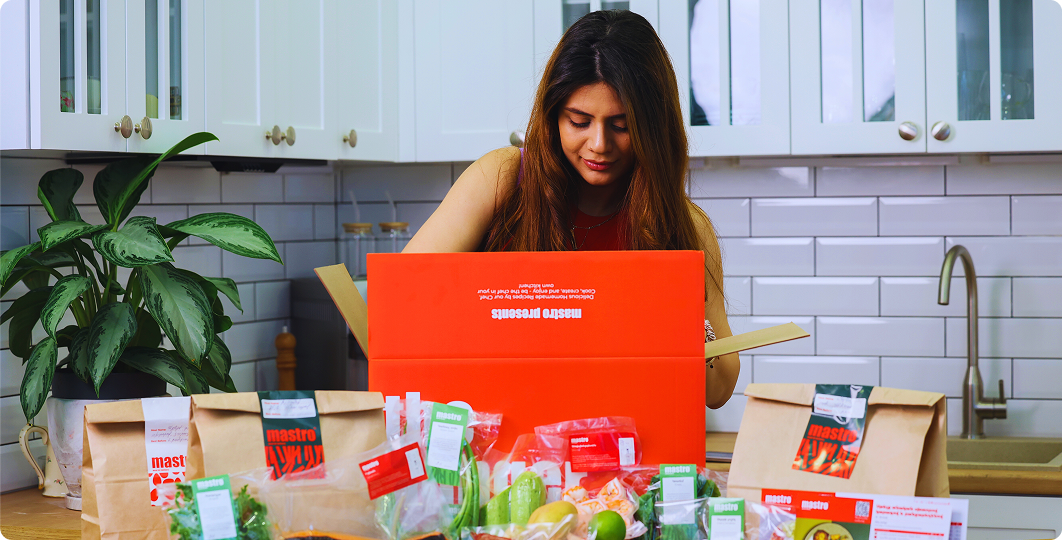%20(2).png)
When it comes to healthy eating, vegetables are the foundation of every balanced diet. They’re colourful, full of flavour, and loaded with nutrients our bodies crave. But let’s be honest—sometimes it’s hard to know what to do with them once they arrive in your kitchen. Should you roast, boil, fry, or throw them into a salad?
One of the simplest (and healthiest) answers is often overlooked: steaming.
Steamed vegetables aren’t just soft and tasty, they’re full of preserved nutrients and can be paired with almost anything on your plate. Better yet, steaming is a technique you can master in minutes.
Here’s everything you need to know about how to steam vegetables so they turn out perfect every time, with insider tips and hacks from the kitchen.
Steaming Vegetables is Better for You
.png)
Steaming might not sound as glamorous as roasting or frying, but it’s very good for your health.
- Nutrient preservation: Unlike boiling, where vitamins can leach into the water, steaming keeps most of the good stuff inside your veggies.
- Lighter on digestion: Gentle cooking makes vegetables easier to digest (perfect for anyone with a sensitive stomach).
- Natural flavour boost: Steaming enhances the natural taste of vegetables instead of masking it with oil or heavy seasoning.
- Versatility: From broccoli to aubergine, almost every vegetable can be steamed with great results.
And here’s the bonus: once you learn how to steam properly, you’ll probably start eating more veggies overall—because they’ll actually taste good.
4 Steps to Steam Vegetables So They’re Always Tender
%20(2).png)
Tender, just-right vegetables are the goal. Nobody wants mushy carrots or undercooked potatoes. The secret is very simple: control the heat, timing, and preparation.
Follow these golden rules:
- Cut evenly: Chop vegetables into similar-sized pieces so they cook at the same pace.
- Keep water below the veg: Whether you’re using a steamer or a pan-and-colander setup, the water should simmer beneath, never touching, your vegetables.
- Check early: It’s better to test a piece after a few minutes than to risk over-steaming. You can always cook longer but never “uncook” a soggy carrot.
- Season smartly: A little olive oil, butter, or herbs added after steaming goes a long way.
Tips for Using a Vegetable Steamer
If you’ve got a vegetable steamer, you’re already halfway there. Here’s how to get the best results:
- Peel or prep vegetables as you normally would (carrots peeled, aubergines simply topped and tailed).
- Place evenly cut vegetables inside the basket and don’t pile them too high.
- Keep the water simmering gently under the basket (never at a rolling boil).
- Lift the lid carefully to avoid steam burns.
- Test doneness with a fork or knife; vegetables should be tender but still slightly firm.
No Steamer? No Problem. Use a Pan and Colander
Don’t own a steamer? No worries. A saucepan and a heatproof colander can do the trick.
- Fill the pan with a few centimetres of water and bring to a simmer.
- Rest the colander on top (make sure it’s metal, not plastic).
- Add your vegetables and cover with a lid to trap steam.
- Check water levels occasionally to prevent boiling dry.
- Try flavour infusions: garlic, lemon juice, or fresh herbs in the water will subtly season your veg.
How Long Should You Steam Vegetables?

Timing matters. Here’s a quick cheat sheet for perfectly steamed vegetables:
- Carrots (sliced): 6–7 minutes
- Potatoes (sliced): 10 minutes
- Broccoli or cauliflower florets: 6 minutes
- Courgettes or peppers: 4–5 minutes
- Leafy greens (spinach, cabbage): 2–3 minutes
Tip: Always test by piercing with a fork. Veg should be tender, not mushy.
Can You Steam Vegetables in a Microwave?
Yes, and it’s quicker than you might think.
- Place chopped vegetables in a microwave-safe bowl.
- Add a couple of teaspoons of water.
- Cover tightly with a lid or cling film.
- Microwave on full power, subtracting about a minute from stovetop timings.
This method saves energy and works brilliantly for smaller portions. But still, the healthiest way is to do it with old, proven techniques)
4 Ways to Serve Steamed Vegetables
The beauty of steamed vegetables is that they play well with almost any meal:
- With fish: Try Asian-inspired steamed salmon with broccoli and pak choi.
- With meat: Swap boiled spinach for lightly steamed spinach as a healthy side to beef or chicken.
- With vegetarian dishes: Mix steamed cauliflower, carrots, and courgettes into grain bowls, pastas, or hearty salads.
- On their own: Drizzle with olive oil, sprinkle with herbs, or add a dash of lemon juice for a simple, nourishing snack.
Why Mastro Loves Steamed Vegetables
.png)
At mastro, we’re all about making healthy eating simple. That’s why so many of our weekly menus are packed with fresh vegetables, ready to be steamed, roasted, or sautéed.
When you cook with mastro, you get pre-portioned, quality produce and chef-designed recipes that take the guesswork out of healthy eating so you get balanced meals in under 30 minutes.
So next time you open your mastro box and see colourful carrots, vibrant broccoli, or leafy greens, why not try steaming them? Quick, tasty, and better for you.
Steam Your Way to Healthier Meals
Steaming is one of the simplest kitchen skills you can master, yet it can transform the way you eat vegetables. It preserves nutrients, saves cooking time, and adds variety to your meals.
Want to make it even easier? Let mastro do the planning, shopping, and prepping, so all you need to do is steam, stir, and serve.
👉 Ready to enjoy fresh, balanced meals with zero stress?



.png)